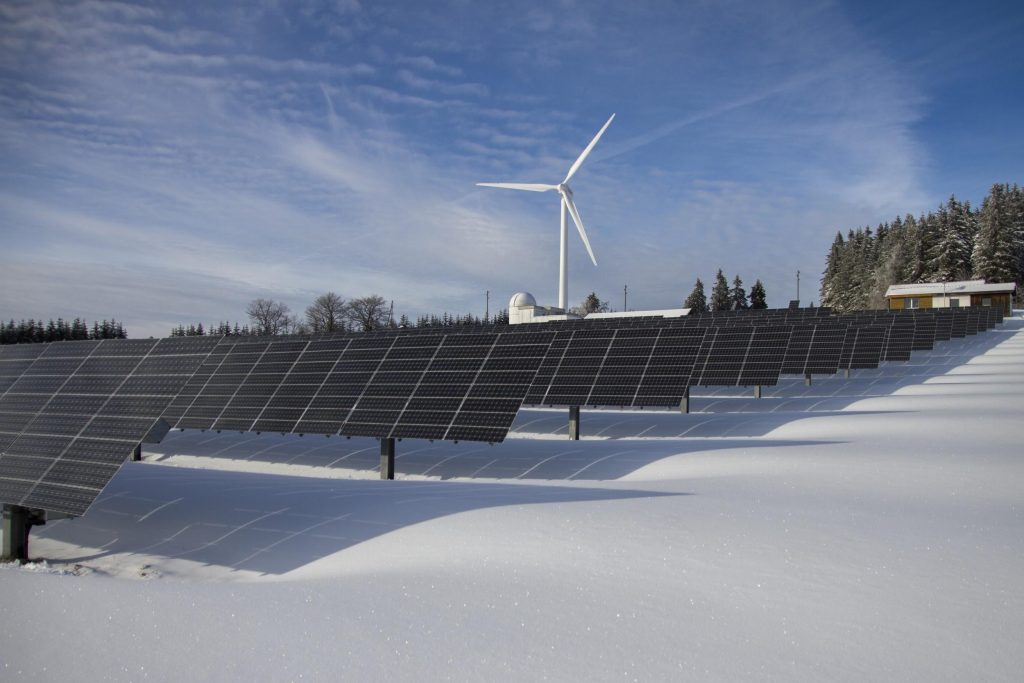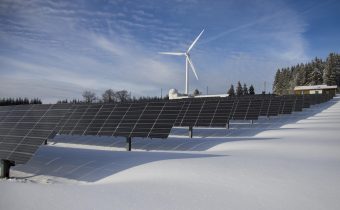
By Jori Hamilton
Climate change. We’ve seen the effects recently with massive hurricanes, rampant wildfires, and shifting temperatures that threaten humans and wildlife alike. With threats so devastating, the push to engage in renewable energy as a method of fighting climate change is more vital than ever.
The United Nations says that climate change will be irreversible by 2030 unless we can make significant changes in our carbon emissions. But some wonder if it is already too late. Unfortunately, hurdles are in place that make implementing alternative energy sources difficult. By understanding these benefits alongside the hurdles faced by renewable energy implementation, we can better understand how to fight climate change from every level of society.
The Benefits
Renewable energy sources are defined by their ability to be sustainably produced. Unlike fossil fuels, renewable energy will not run out at some point in time. Additionally, renewable energy sources lack the same carbon output as traditional energy, such as fossil fuels. Renewable energy includes solar, geothermal, wind, and plenty of others. Implementing renewable energy sources comes with many benefits that will help mitigate the effects of climate change on planet Earth. Some of these benefits include:
● Better Health
The use of fossil fuels has led to health issues such as heart attacks, exacerbation of asthma, strokes, respiratory disorders, and even early death. The host of disasters that have occurred due to fossil fuel production have put countless human lives at risk. A 2015 gas leak in Aliso Canyon, CA, for example, caused health concerns and evacuations for over 5,000 households.
Renewable energy sources, on the other hand, do not carry these disastrous health concerns. This makes for safer, more sustainable cities and a world environment overall.
● Cleaner Air and Water
Renewable energy sources produce little to no global warming emissions. This makes for cleaner air and less polluted water across the world. Burning coal produces up to 3.6 pounds of CO2E/kWh, for example, while wind or geothermal power produces a maximum of 0.2. Reducing fossil fuel burning reduces smog and acid rain, in turn helping conserve clean air and water for the world to enjoy.
● Disaster Avoidance
Innumerable disasters have been caused as a result of fossil fuel production, not to mention the natural climate crises that are exacerbated by rising temperatures. Any time a disaster hits, lives are threatened and health is put at risk. Natural disasters can release dangerous chemicals and substances like asbestos into the air and water, polluting alongside fossil fuel waste and causing health problems like mesothelioma. Renewable energy sources and materials cut down on the risk of these disasters by improving the climate overall. With fewer pollutants in the open as well as fewer contributors to climate change, human lives can be made safer. With benefits like these, it is hard to believe that renewable energy has not already been implemented into the modern world. However, the hurdles faced by such implementation may help to explain why fighting climate change isn’t more simply done.
The Hurdles
If fighting climate change were simple, we would have made much more progress by now. Unfortunately, the hurdles in implementing renewable energy as a method of fighting climate change are counterproductive to definitive solutions.
These hurdles include:
● Energy Output
In the U.S., 17% of net energy was generated through renewables in 2018. That number is continuously on the rise. In fact, by 2040 as much as 45% of the world’s energy will be produced through renewables. Unfortunately, however, that still leaves the vast majority of energy consumption to traditional fossil fuel production. Transitioning that energy use to renewables represents a massive endeavor that will likely take excessive time and money.
● High Cost
The cost of renewables and the facilities needed to process renewable energy sources have historically been higher than fossil fuels. However, that reality is shifting. It currently takes around $0.05-$0.15/kWh to produce a fossil fuel burning power plant. Now, energy plants that process hydroelectric power can be produced in the same price range.
The difficulty, however, is continuing to align these costs with appropriate energy sources. A biomass energy plant can cost as much as $0.25/kWh. With investments on the line, every cent counts.
A More Sustainable Future
Despite the many benefits of renewable energy in the fight against climate change, the hurdles faced by renewable implementation make for a difficult battle. While the average person can’t do much about the economic costs and difficulties of implementing renewable energy, becoming a responsible citizen can help stave off the worst of climate change in the meantime.
Everyone can work to do their part by supporting renewable energy integration at the governmental and private sector levels. Social workers can even have a substantial role and impact in advocating for renewable energy use. With the active listening and robust communication skills required of social workers, these essential community advocates can play a key part in communicating renewable energy needs to a broader audience.
For everyone else, there are things you can do as well to make a difference. Write to your representatives, buy energy-certified products, and recycle where you can. Renewable energy is the future, it just might take some time to get there.

Jori Hamilton is an experienced writer residing in the Northwestern U.S. She covers a wide range of topics but takes a particular interest in topics related to politics, urban living, society, and health. If you’d like to learn more about Jori, you can follow her on Twitter and LinkedIn.
